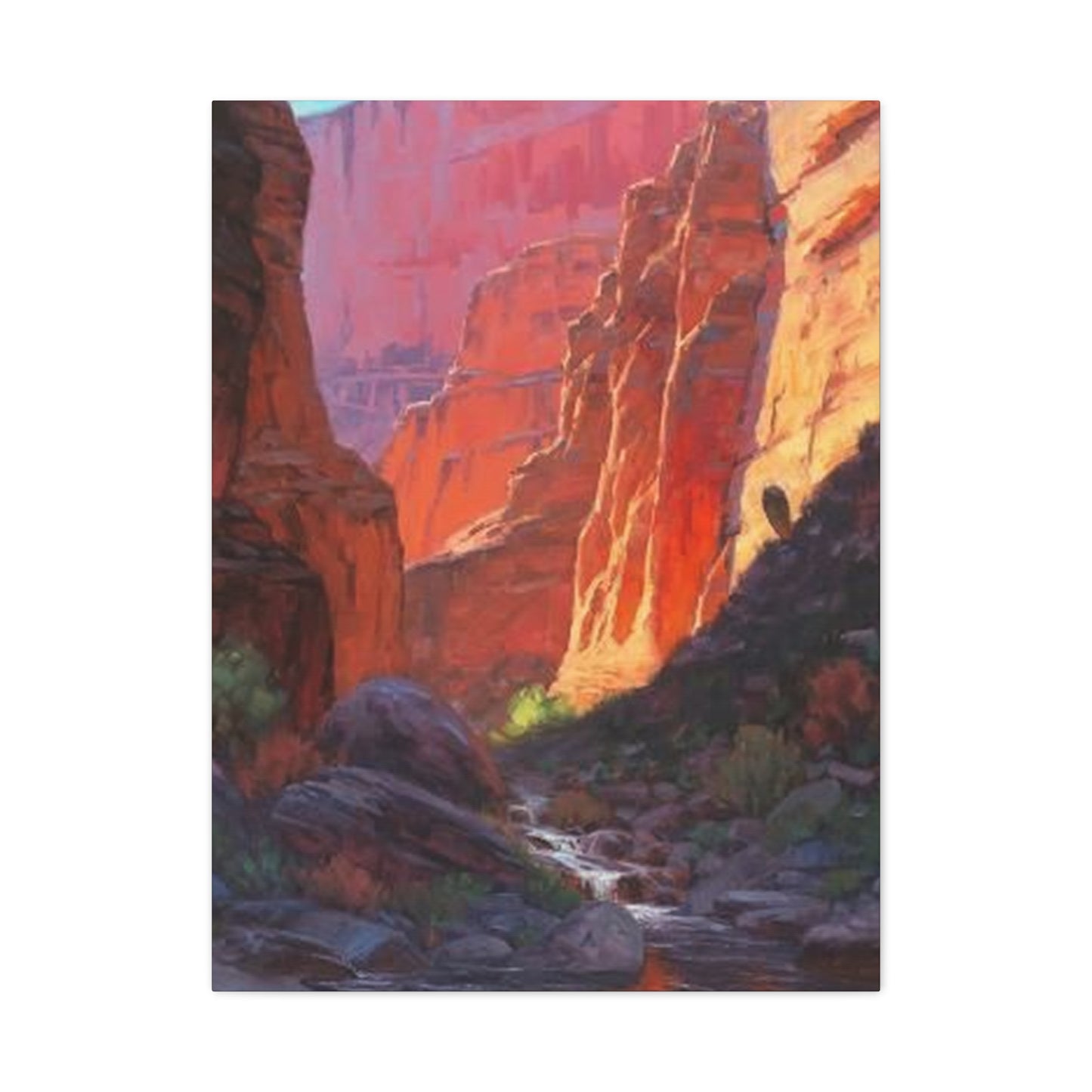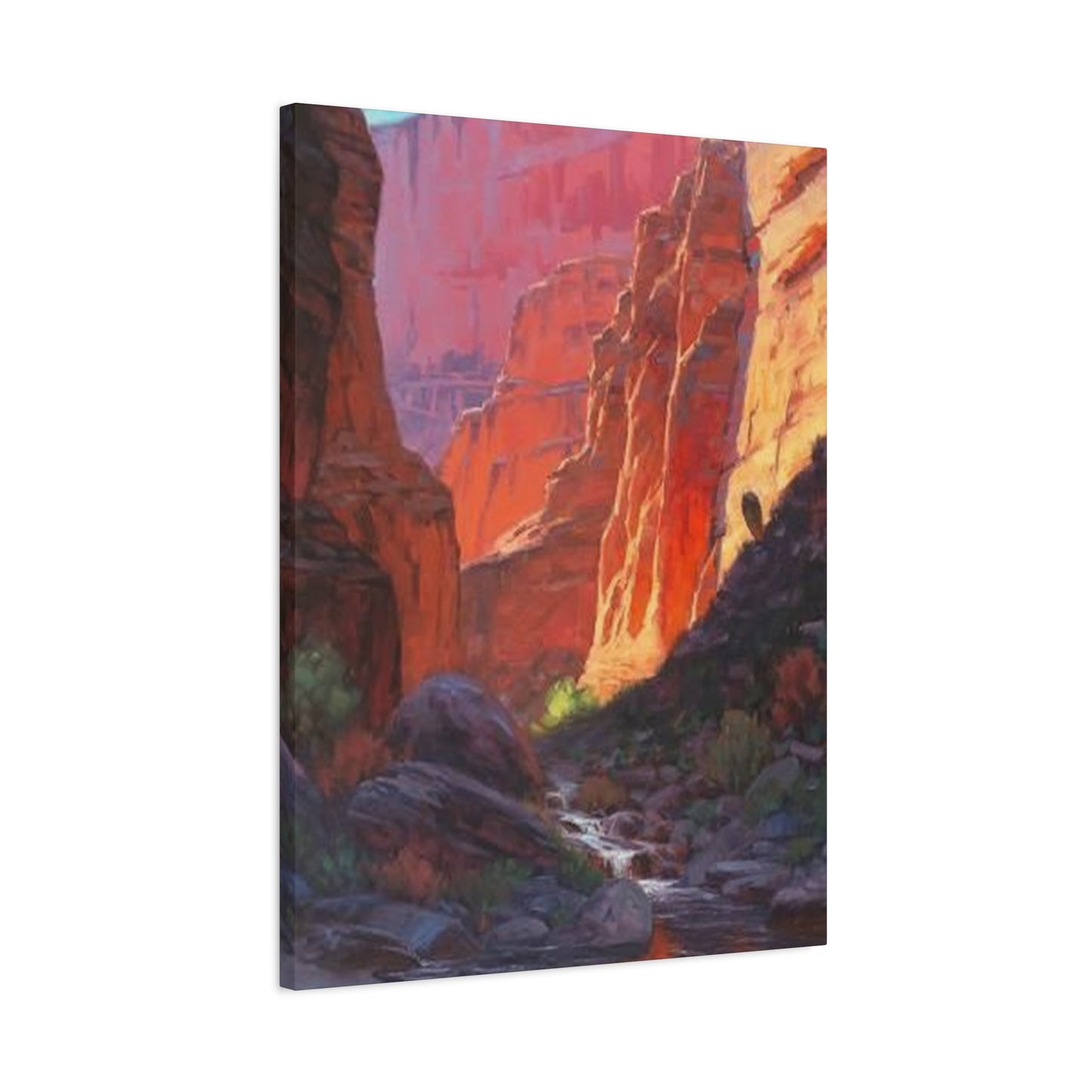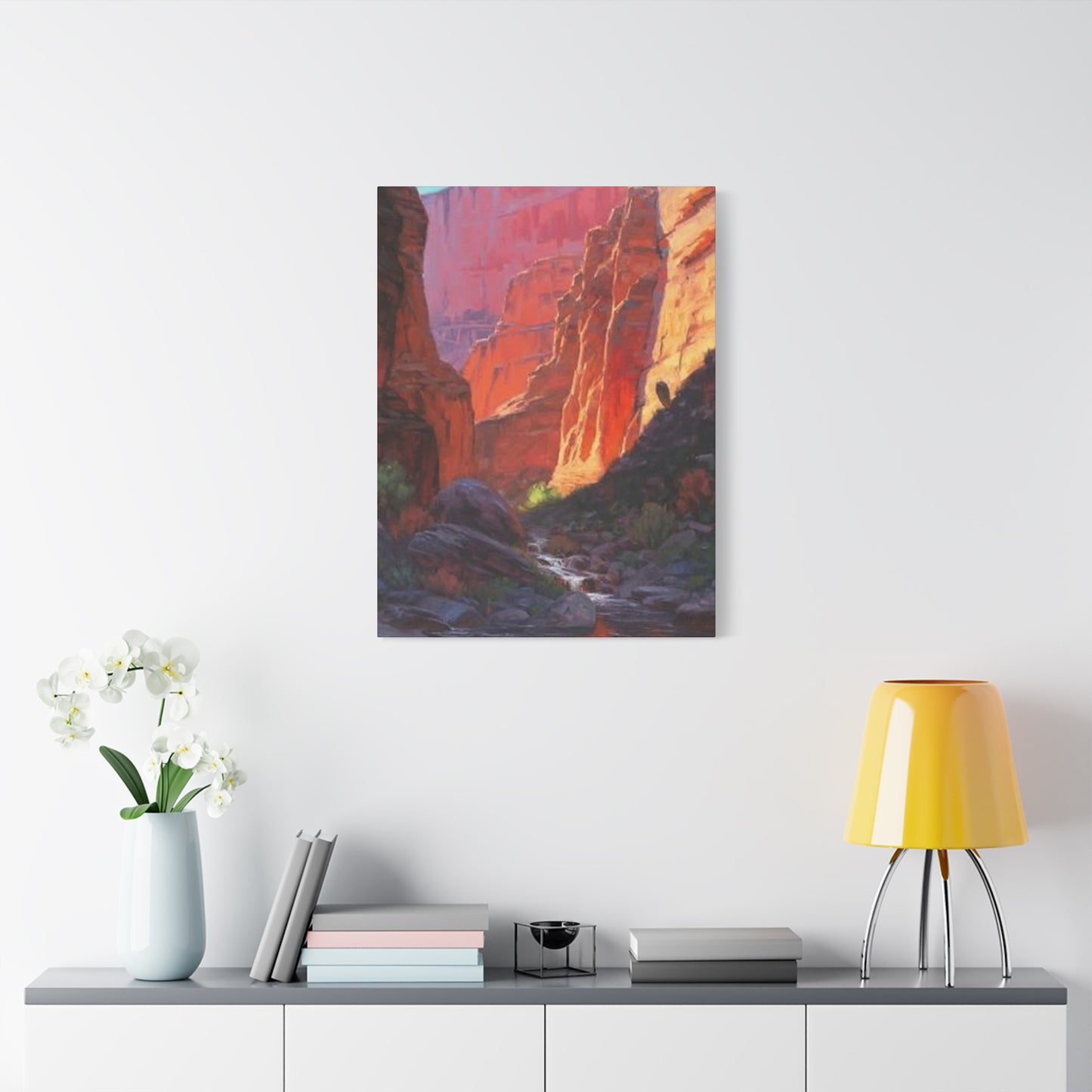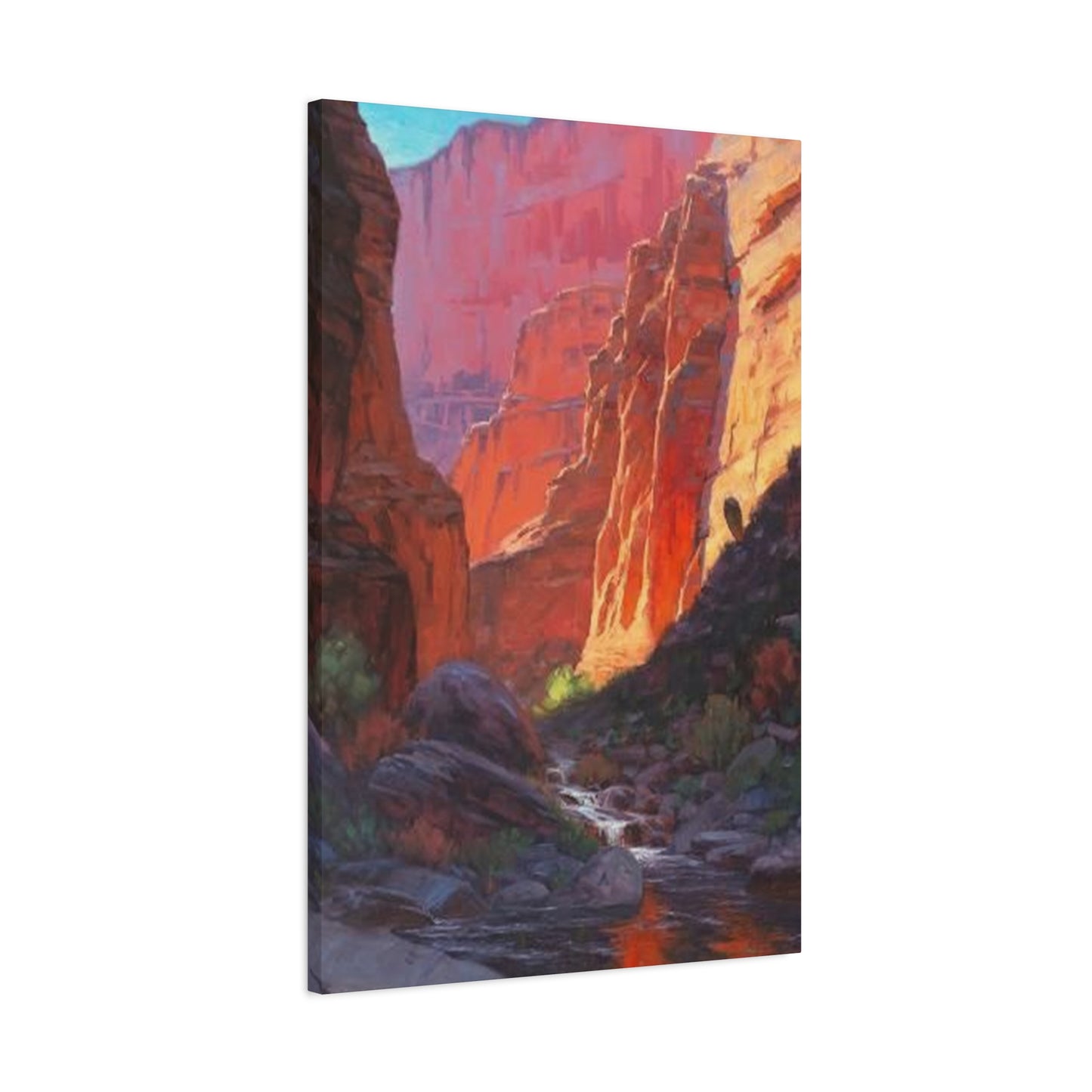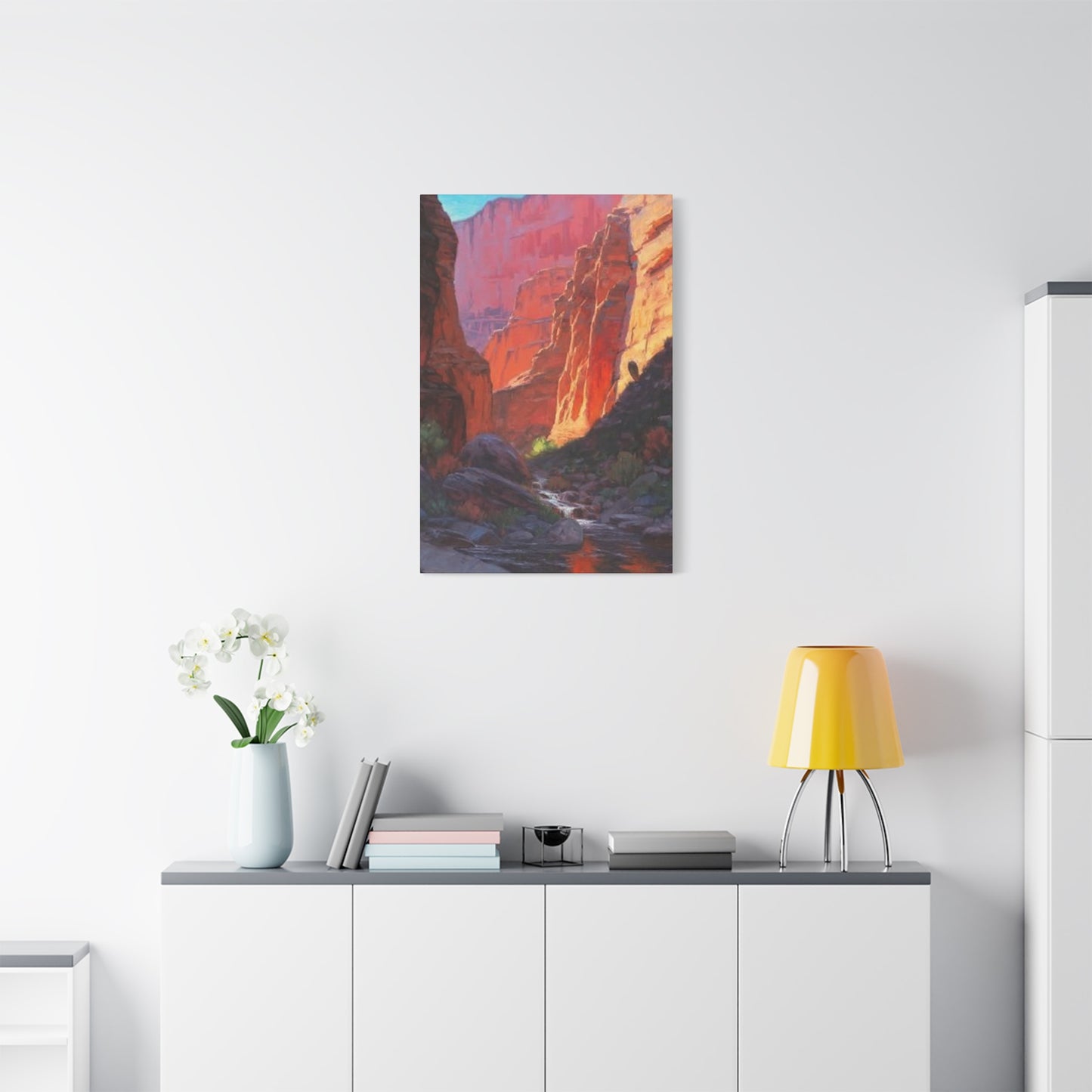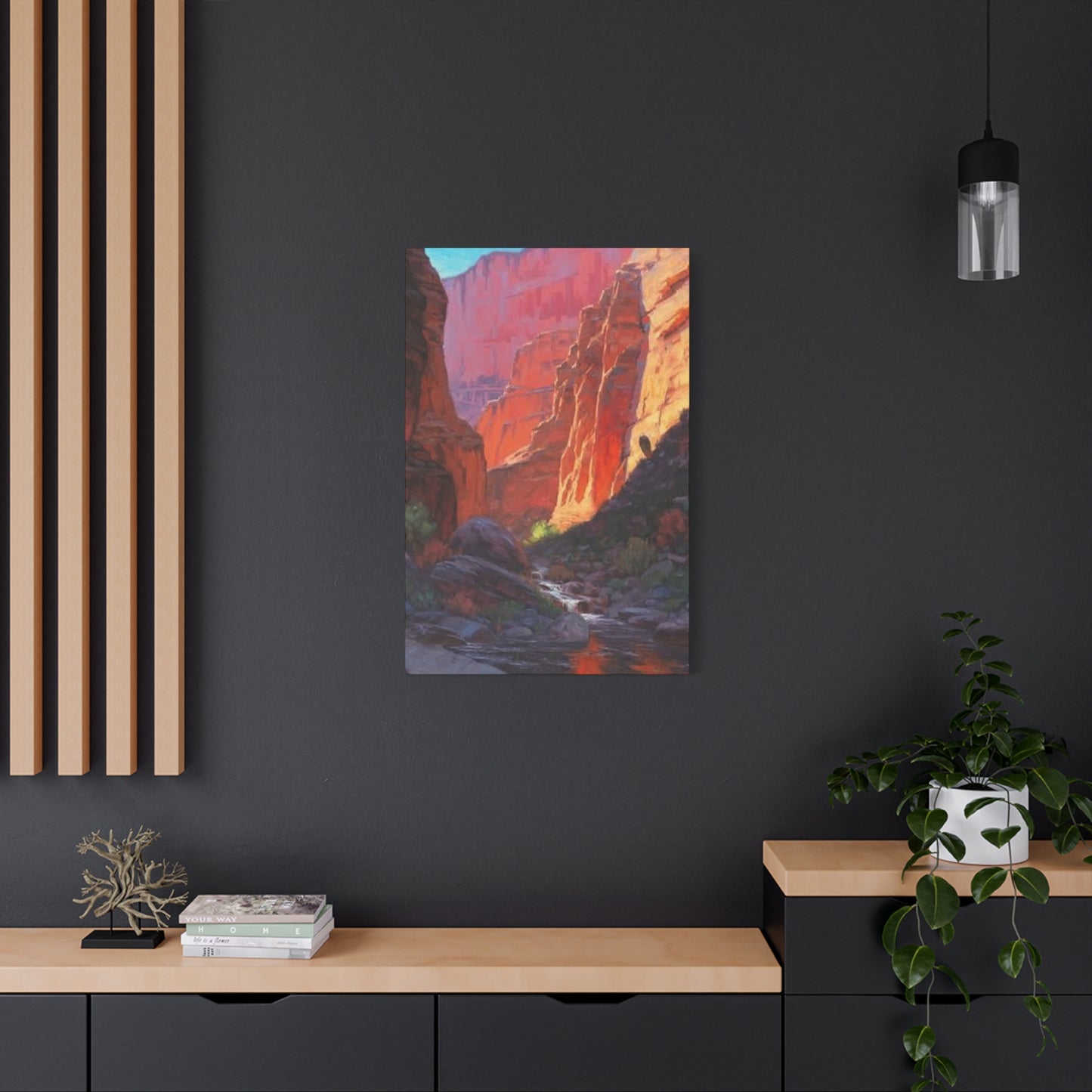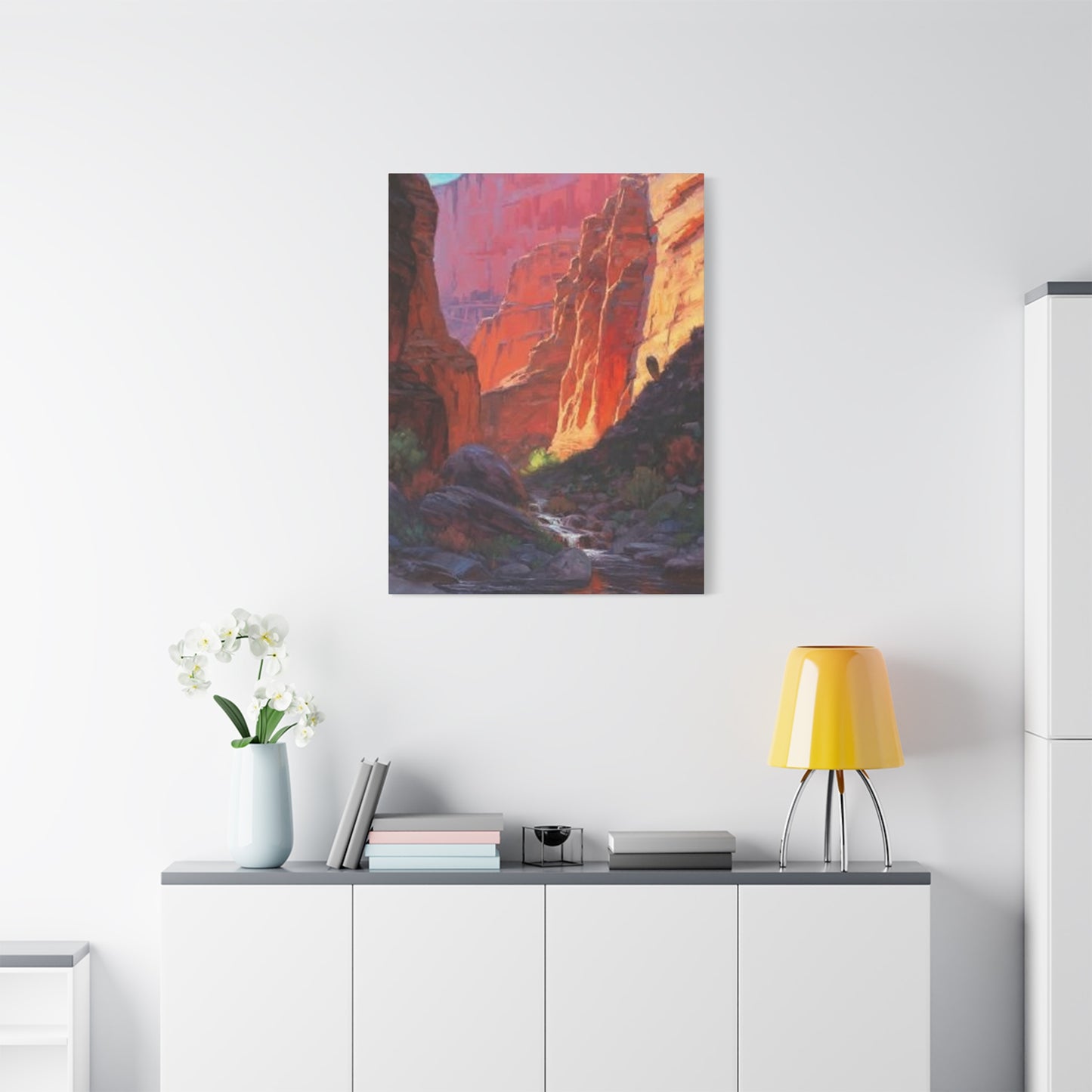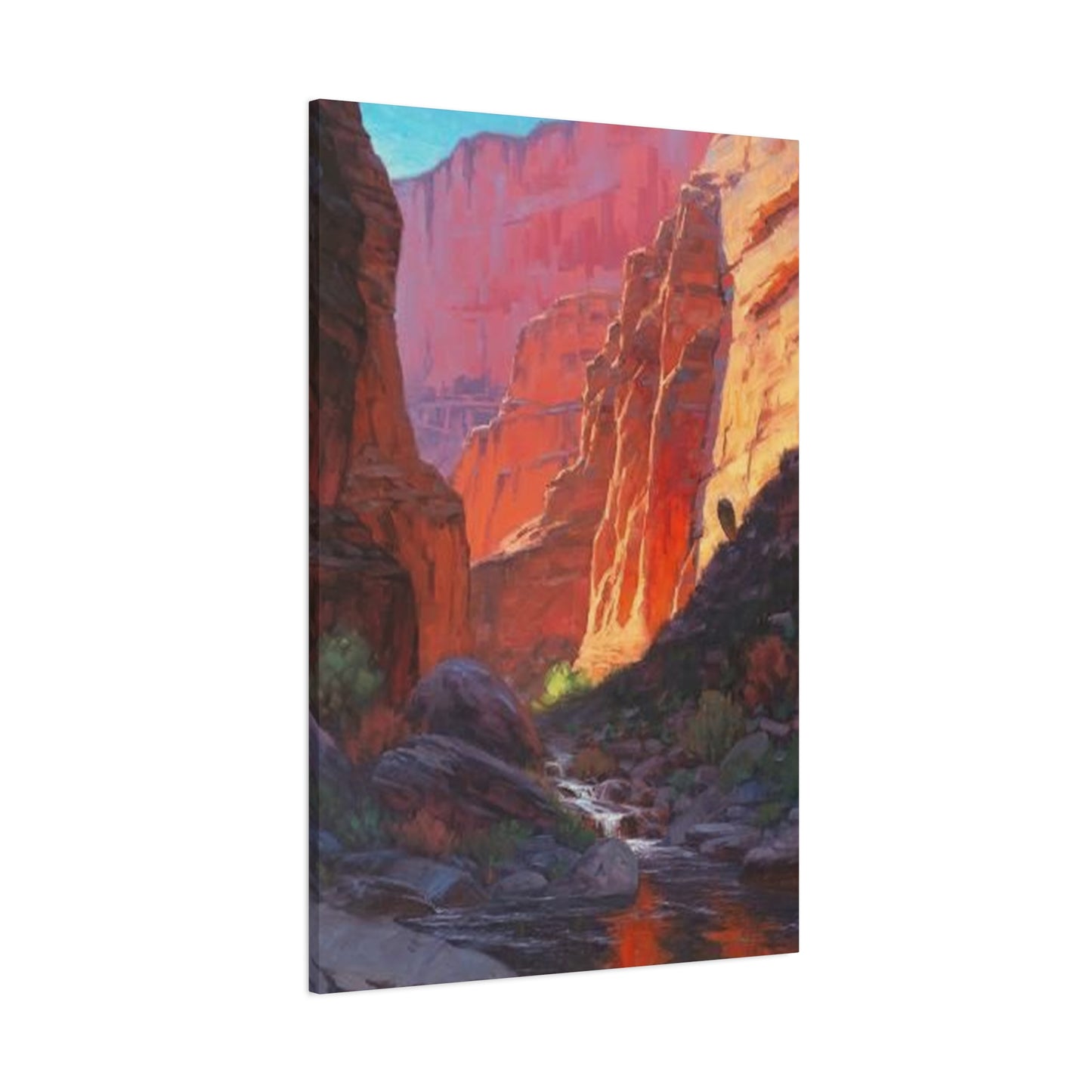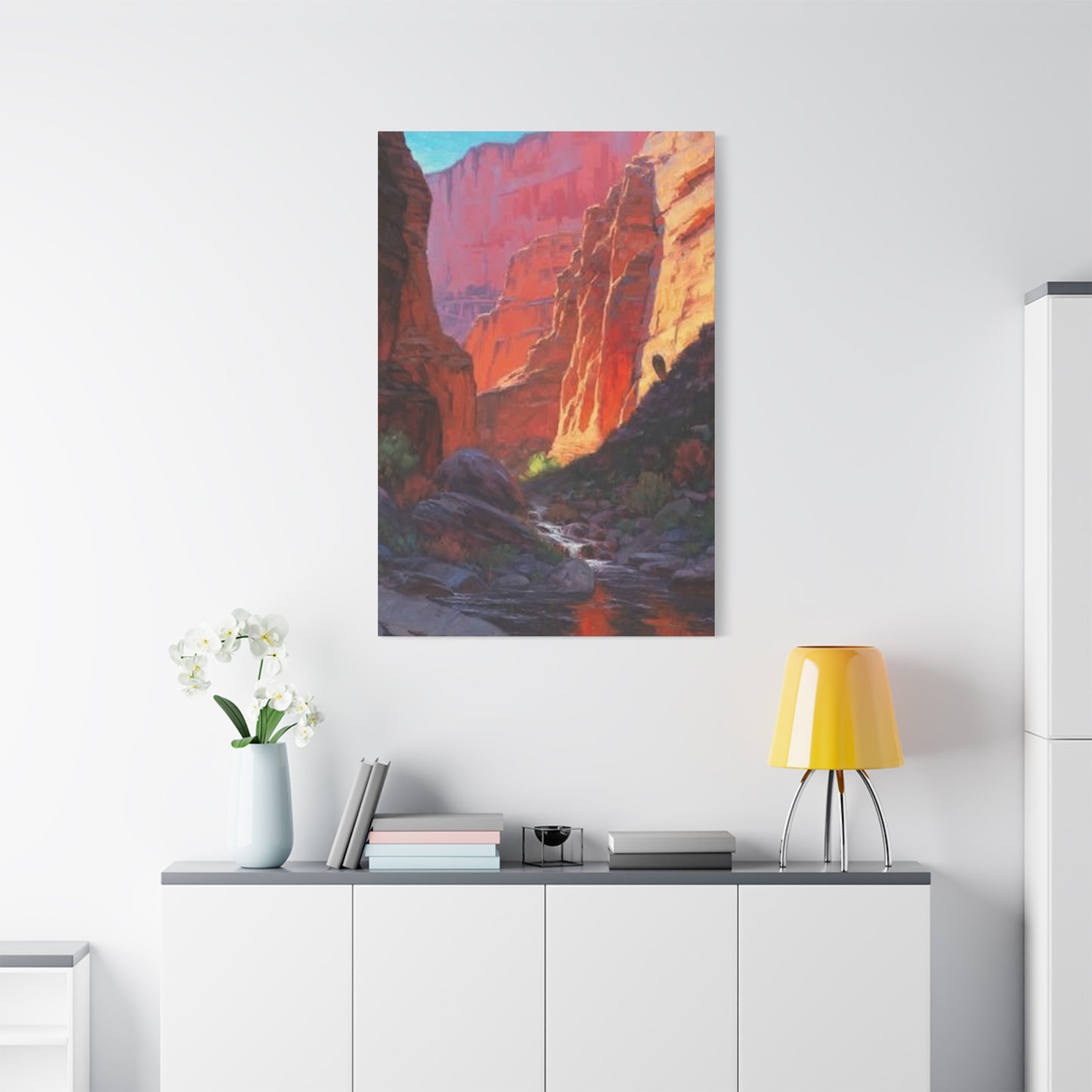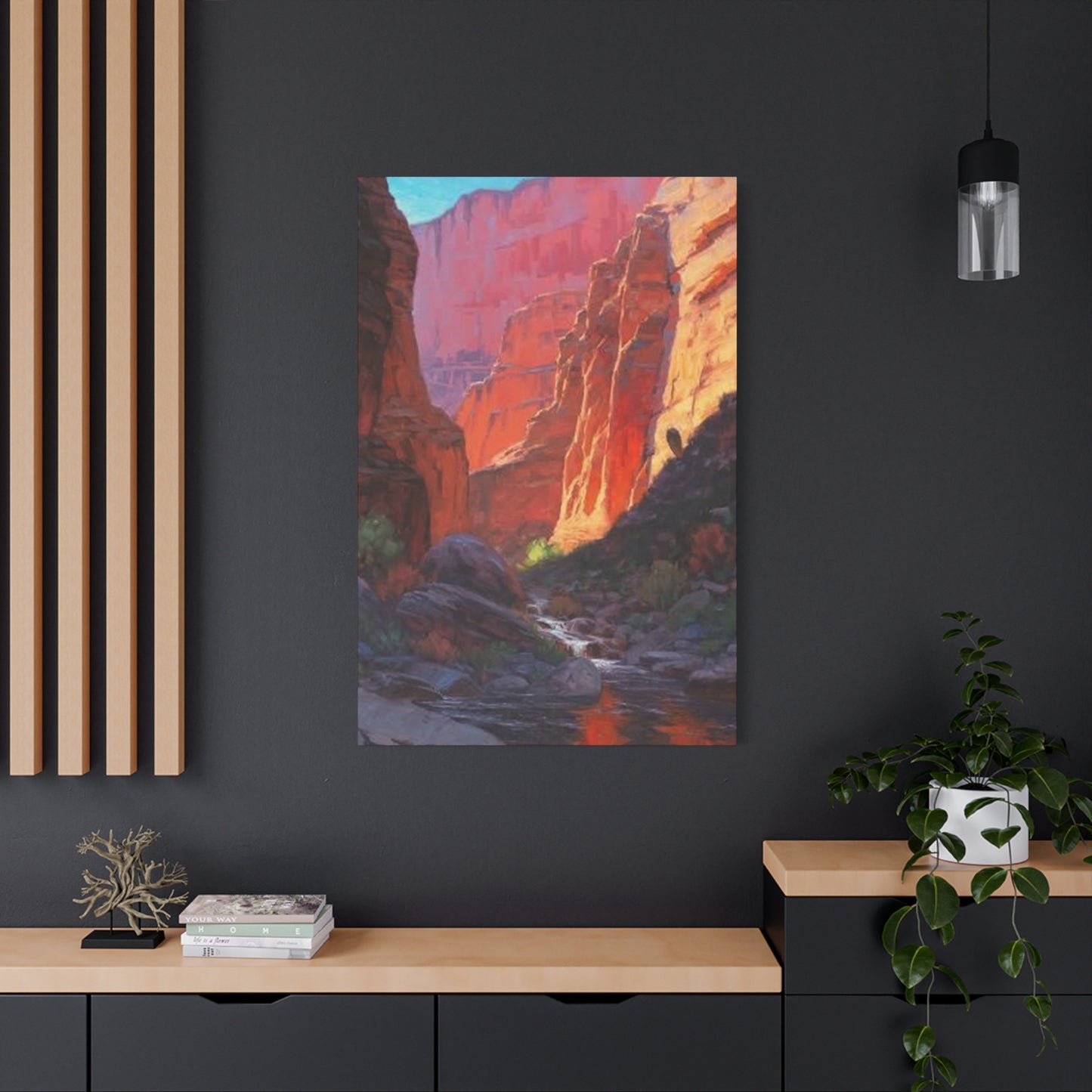Magnificent Vistas: Your Complete Guide to Canyon Arizona Wall Art for Every Home
The Grand Canyon stands as one of nature's most breathtaking masterpieces, carved over millions of years into the Colorado Plateau. This geological wonder has captured the imagination of artists, photographers, and nature enthusiasts for generations. When it comes to bringing the majestic beauty of this natural landmark into your home, Grand Canyon wall art offers an unparalleled opportunity to connect with nature's grandeur while enhancing your living environment.
The appeal of Grand Canyon artwork extends far beyond mere decoration. These pieces serve as windows to one of the world's most spectacular natural formations, allowing you to experience the canyon's dramatic landscapes, vibrant colors, and spiritual essence from the comfort of your own home. Whether you're drawn to the golden hues of sunrise over the rim, the deep shadows of twilight, or the intricate geological formations that tell the story of Earth's history, Grand Canyon wall art provides a constant reminder of nature's power and beauty.
The diversity of Grand Canyon artwork available today reflects the canyon's multifaceted character. From sweeping panoramic views that capture the vastness of this natural wonder to intimate details of rock formations and native flora, there's a style and perspective to suit every taste and home decor theme. The popularity of Grand Canyon wall art continues to grow as more people seek to bring elements of the natural world into their living environments, creating sanctuaries that inspire and rejuvenate.
Capturing the Majesty: Grand Canyon Wall Art Ideas
The Grand Canyon offers endless inspiration for wall art, with each viewpoint providing a unique perspective on this natural wonder. When selecting Grand Canyon wall art, consider the various elements that make this landscape so captivating. The interplay of light and shadow across the canyon walls creates dramatic contrasts that photographers and artists have attempted to capture for decades. These pieces often showcase the canyon's layered rock formations, each telling a story spanning millions of years of geological history.
Popular Grand Canyon wall art ideas include panoramic shots taken from famous viewpoints such as Hopi Point, Desert View, and Bright Angel Point. These wide-angle perspectives emphasize the canyon's immense scale and the way the Colorado River winds through its depths. The layered sedimentary rocks, painted in hues of red, orange, yellow, and purple, create natural artwork that changes throughout the day as the sun moves across the sky.
Detail shots focusing on specific geological features make equally compelling wall art. Close-up images of the canyon's rock formations, ancient petroglyphs, or the gnarled juniper trees that cling to the rim can provide intimate glimpses into the canyon's character. These pieces work particularly well in smaller rooms or as part of a larger gallery wall arrangement.
Seasonal variations offer another dimension to Grand Canyon wall art ideas. Winter scenes featuring snow-dusted rim trails and frost-covered vegetation present a different perspective on this desert landscape. Spring wildflower displays add splashes of color against the backdrop of red rock, while autumn brings subtle changes in vegetation that photographers often capture in their Grand Canyon artwork.
The golden hour and blue hour provide some of the most spectacular lighting conditions for Grand Canyon photography. Wall art pieces that capture these magical moments often feature warm, glowing colors that can transform the ambiance of any room. The way morning light gradually illuminates the canyon's eastern faces or how evening light creates long shadows across the western rim provides endless artistic possibilities.
Artistic interpretations of the Grand Canyon extend beyond traditional photography into various mediums and styles. Watercolor paintings capture the canyon's ethereal beauty with soft, flowing colors that seem to dance across the paper. Oil paintings can provide rich, textured representations that emphasize the canyon's rugged character and geological complexity.
Contemporary artists have also found inspiration in the Grand Canyon's abstract qualities. The natural patterns created by erosion, the geometric shapes formed by rock layers, and the rhythmic undulations of the canyon walls have influenced modern artistic interpretations that focus on form, color, and composition rather than literal representation.
How Grand Canyon Wall Art Brings Nature Indoors
Incorporating Grand Canyon wall art into your home creates an immediate connection to the natural world, transforming indoor environments into sanctuaries that celebrate the beauty of the American Southwest. This connection goes beyond simple decoration, offering psychological and emotional benefits that can enhance your daily living experience. Studies have shown that exposure to natural imagery, even in the form of wall art, can reduce stress levels, improve mood, and create a sense of calm and tranquility.
The Grand Canyon's distinctive color palette plays a crucial role in how these artworks affect indoor environments. The warm earth tones – ranging from deep crimsons and burnt oranges to soft yellows and subtle purples – create a welcoming atmosphere that can make any room feel more inviting. These natural colors work harmoniously with a wide variety of decorating schemes, from rustic and traditional to modern and contemporary.
Grand Canyon wall art serves as a focal point that can anchor an entire room's design scheme. The natural drama of canyon landscapes provides visual weight that can balance other design elements while drawing the eye and creating conversation. Unlike purely decorative pieces, Grand Canyon artwork tells a story and evokes emotions, making it a meaningful addition to any home.
The scale of Grand Canyon imagery can help create the illusion of expanded living areas. Large-format prints or murals can make small rooms feel more spacious by providing visual depth and perspective. The canyon's vast horizons and layered geological formations naturally draw the eye into the distance, creating a sense of openness that can be particularly valuable in urban environments or homes with limited natural views.
Bringing Grand Canyon wall art indoors also serves an educational purpose, particularly for families with children. These pieces can spark interest in geology, natural history, and environmental conservation. The canyon's visible rock layers provide opportunities to discuss Earth's history, while images of native flora and fauna can introduce viewers to Southwestern ecosystems.
The spiritual and contemplative qualities of the Grand Canyon translate effectively to indoor environments through carefully chosen wall art. Many people find that Grand Canyon imagery promotes reflection and mindfulness, creating quiet moments of connection with something larger than themselves. This can be particularly valuable in today's fast-paced world, where opportunities for contemplation and connection with nature are increasingly rare.
Different rooms in the home can benefit from Grand Canyon wall art in various ways. In bedrooms, softer canyon images featuring gentle morning light or twilight scenes can create a peaceful atmosphere conducive to rest and relaxation. Living areas might feature more dramatic pieces that capture the canyon's grandeur and serve as conversation starters. Home offices can benefit from inspirational canyon vistas that provide mental breaks and encourage creative thinking.
The seasonal changes captured in Grand Canyon wall art can also help bring the natural rhythm of the outdoors inside. Pieces that showcase the canyon in different seasons or lighting conditions can provide visual variety throughout the year, helping to combat the monotony that can sometimes affect indoor environments.
The Best Styles for Grand Canyon Arizona Wall Art
Grand Canyon wall art encompasses a diverse range of artistic styles, each offering unique ways to interpret and present this natural wonder. Choosing the right style depends on your personal preferences, home decor, and the specific mood or atmosphere you want to create in your living environment. Traditional landscape photography remains one of the most popular styles for Grand Canyon wall art, capturing the canyon's grandeur with sharp detail and vibrant colors that showcase the natural beauty of this iconic location.
Photorealistic paintings offer another approach to Grand Canyon artwork, combining the accuracy of photography with the artistic interpretation of traditional painting techniques. These pieces often feature rich textures and depth that can only be achieved through hand-painted methods. Oil paintings, in particular, excel at capturing the canyon's complex geological formations and the subtle variations in color and light that make each viewing experience unique.
Impressionistic interpretations of the Grand Canyon focus on capturing the emotional essence of the landscape rather than precise details. These artworks often feature loose brushstrokes and vibrant colors that convey the feeling of standing at the canyon's rim rather than documenting every rock formation. This style works particularly well for creating mood and atmosphere in residential settings, where the goal is often to evoke emotion rather than provide documentary accuracy.
Abstract Grand Canyon wall art takes inspiration from the canyon's natural forms, colors, and patterns to create non-representational pieces that capture the spirit of this geological wonder. These artworks might focus on the flowing lines created by erosion, the geometric patterns formed by rock layers, or the dynamic interplay of light and shadow across the canyon walls. Abstract pieces offer flexibility in home decorating, as they can complement various design styles while still maintaining a connection to the Grand Canyon theme.
Minimalist approaches to Grand Canyon wall art emphasize simplicity and clean lines, often focusing on single elements such as a lone tree silhouetted against the canyon backdrop or the simple horizon line where rim meets sky. These pieces work well in modern and contemporary home settings where clean, uncluttered aesthetics are preferred. The power of minimalist Grand Canyon art lies in its ability to suggest the canyon's vastness through restraint rather than elaborate detail.
Vintage-inspired Grand Canyon wall art draws from the rich tradition of travel posters and National Park Service artwork that promoted Western tourism in the early to mid-20th century. These pieces often feature bold, simplified graphics and warm color palettes that evoke nostalgia for the golden age of American travel. This style works particularly well in homes with vintage, rustic, or Americana decorating themes.
Panoramic formats represent one of the most effective styles for capturing the Grand Canyon's immense scale. These wide-format pieces can span entire walls, creating immersive experiences that make viewers feel as though they're standing at the canyon's rim. Panoramic Grand Canyon wall art works especially well in living rooms, dining areas, and other spaces where the goal is to create a dramatic focal point.
Contemporary artistic interpretations of the Grand Canyon incorporate modern techniques and perspectives while maintaining the landscape's inherent beauty. These pieces might use unusual color palettes, experimental compositions, or mixed media approaches to present fresh perspectives on familiar views. Contemporary Grand Canyon art appeals to collectors and homeowners who appreciate innovation while maintaining a connection to natural themes.
Using Grand Canyon Art to Create a Focal Point
Creating an effective focal point with Grand Canyon wall art requires careful consideration of scale, placement, and surrounding elements. A well-chosen Grand Canyon piece can serve as the centerpiece of a room's design, drawing attention and providing a foundation around which other decorative elements can be arranged. The key to successful focal point creation lies in selecting artwork that commands attention without overwhelming the surrounding environment.
Size plays a crucial role in determining whether a Grand Canyon artwork will function effectively as a focal point. Large-scale pieces naturally draw the eye and can anchor an entire room's design scheme. When selecting oversized Grand Canyon wall art, consider the proportions of your room and existing furniture. A massive canyon panorama might overwhelm a small living room, while a modest-sized print could get lost on a large, empty wall.
Placement determines how effectively your Grand Canyon artwork functions as a focal point. The most impactful positioning typically places the artwork at eye level on a wall that's naturally visible upon entering the room. Walls behind seating areas, above fireplaces, or opposite entryways often provide ideal locations for focal point artwork. Avoid competing elements that might divide attention, such as busy wallpaper patterns or multiple large decorative objects nearby.
Lighting can dramatically enhance the focal point power of Grand Canyon wall art. Dedicated artwork lighting, such as picture lights or track lighting, can illuminate the piece and create visual separation from surrounding wall areas. This is particularly effective with Grand Canyon imagery, as proper lighting can emphasize the natural drama of canyon landscapes and make colors appear more vibrant and engaging.
The surrounding design elements should complement and support your Grand Canyon focal point rather than compete with it. Choose furniture, textiles, and accessories that echo the artwork's color palette or thematic elements. For example, warm wood furniture can complement the earthy tones found in most Grand Canyon imagery, while natural fiber textiles can reinforce the connection to the natural world.
Framing choices significantly impact how effectively Grand Canyon wall art functions as a focal point. Bold, substantial frames can increase the visual weight of the artwork and help it command more attention, while simple, minimal frames allow the imagery itself to take center stage. The frame should complement both the artwork and the room's overall design aesthetic without becoming a distraction.
Creating visual balance around your Grand Canyon focal point requires careful attention to the distribution of visual weight throughout the room. If your canyon artwork is large and dramatic, balance it with substantial furniture pieces or architectural elements rather than trying to match it with additional large artworks. Smaller supporting elements should be arranged to create visual flow that leads the eye naturally to the main focal point.
Color coordination between your Grand Canyon wall art and the room's overall palette helps integrate the focal point seamlessly into the design scheme. This doesn't mean everything must match exactly, but complementary colors and tones should create harmony rather than conflict. The natural earth tones found in Grand Canyon imagery provide an excellent foundation for coordinating room colors.
Consider the viewing angles and distances from which your Grand Canyon focal point will be observed. Artwork that functions well as a focal point should remain engaging from various positions within the room. Fine details that are only visible up close might not be effective for pieces intended to anchor a large living area, while bold compositions with strong contrasts work well for distance viewing.
The Colors of the Grand Canyon in Wall Art
The Grand Canyon's spectacular color palette provides one of its most compelling artistic features, with hues that shift and change throughout the day as light conditions evolve. These natural colors translate beautifully to wall art, offering decorators a rich foundation for creating harmonious and inspiring home environments. The canyon's signature red rocks, formed primarily from iron oxide deposits in ancient sandstone, provide warm, earthy tones that work exceptionally well in residential settings.
The layered geological formations of the Grand Canyon create a natural gradient of colors that artists and photographers have long celebrated. From the pale limestone layers at the rim to the dark schist rocks near the river, each stratum contributes its own unique coloration to the overall palette. This natural layering effect creates depth and visual interest in Grand Canyon wall art that can enhance any room's decorative scheme.
Morning light brings out the softer, more delicate colors in Grand Canyon wall art. Dawn illumination often emphasizes pale yellows, soft pinks, and gentle oranges that can create peaceful, contemplative atmospheres in bedrooms or meditation areas. These subtle morning hues work particularly well in homes with neutral decorating schemes or Scandinavian-inspired minimalist designs.
Midday lighting reveals the Grand Canyon's most vibrant and contrasting colors. The bright desert sun illuminates the red and orange rock faces while creating deep purple shadows in the canyon's recesses. Grand Canyon wall art that captures these dramatic midday contrasts can energize living areas and create bold focal points that command attention.
Sunset and golden hour lighting produce some of the most beloved colors in Grand Canyon wall art. The warm, glowing light that occurs just before sunset transforms the canyon walls into a symphony of golds, oranges, and deep reds that seem to glow from within. These warm tones create inviting, cozy atmospheres that work beautifully in dining rooms, living areas, and family gathering locations.
The cooler colors found in Grand Canyon imagery shouldn't be overlooked when selecting wall art. The deep blues and purples of shadowed canyon walls provide important balance to the warmer tones and can help create more sophisticated, complex color schemes. These cooler hues work particularly well in contemporary home settings where a more refined color palette is desired.
Seasonal variations add another dimension to the color possibilities in Grand Canyon wall art. Winter scenes might feature the stark contrast of white snow against red rocks, creating dramatic black-and-white compositions with bold color accents. Spring brings subtle green tones from emerging vegetation, while autumn can add golden highlights from changing cottonwood leaves along the Colorado River.
The interaction between natural and artificial lighting can significantly affect how Grand Canyon colors appear in wall art. Warm incandescent lighting tends to enhance the red and orange tones naturally found in canyon imagery, while cooler LED or fluorescent lighting might emphasize the blue and purple shadow areas. Consider your room's lighting conditions when selecting Grand Canyon wall art to ensure the colors will appear as intended.
Understanding color temperature can help you choose Grand Canyon wall art that creates the desired mood in your living environment. Warm-toned pieces with prominent reds, oranges, and yellows create cozy, energizing atmospheres that work well in social areas. Cooler-toned pieces with blues, purples, and grays can create calming, sophisticated environments suitable for bedrooms or study areas.
The psychological effects of Grand Canyon colors in wall art extend beyond simple aesthetic appeal. Warm earth tones have been shown to reduce stress and create feelings of security and comfort. The natural color combinations found in Grand Canyon imagery often include these beneficial warm tones balanced with cooler accents that prevent the palette from becoming overwhelming or monotonous.
When incorporating Grand Canyon colors into your home through wall art, consider how these hues will interact with existing furnishings and architectural elements. The versatility of Grand Canyon color palettes means they can complement a wide range of decorating styles, from rustic and traditional to modern and contemporary. The key is finding the right balance between the artwork's natural colors and your home's existing design elements.
Photographing the Grand Canyon for Stunning Wall Decor
Creating stunning Grand Canyon wall art through photography requires understanding both the technical aspects of landscape photography and the unique characteristics that make the canyon such a compelling subject. The Grand Canyon presents numerous challenges and opportunities for photographers, from the extreme contrast between bright rim areas and shadowed depths to the constantly changing light conditions that can transform the scene from moment to moment.
Timing plays a crucial role in capturing Grand Canyon photographs suitable for wall art. The golden hour, occurring shortly after sunrise and before sunset, provides the most favorable lighting conditions for canyon photography. During these periods, the warm, angled light illuminates the canyon walls while creating the dramatic shadows that give depth and dimension to the landscape. The soft quality of golden hour light also helps reduce the harsh contrasts that can be problematic during midday shooting.
Equipment selection significantly impacts the quality of Grand Canyon photographs intended for wall art. Wide-angle lenses are essential for capturing the canyon's vast scale and creating the sweeping panoramic views that make such compelling wall pieces. However, telephoto lenses also have their place in Grand Canyon photography, allowing photographers to isolate specific geological features or compress distant elements to create unique compositional arrangements.
A sturdy tripod is indispensable for Grand Canyon photography, particularly during the low-light conditions that often produce the most dramatic images. The ability to keep the camera perfectly still during longer exposures allows for sharper images and enables techniques such as HDR (High Dynamic Range) photography, which can help manage the extreme contrast ranges commonly encountered in canyon environments.
Understanding the Grand Canyon's geography helps photographers plan for the best shooting locations and timing. South Rim viewpoints such as Hopi Point, Mohave Point, and Desert View each offer unique perspectives and are positioned to take advantage of different lighting conditions throughout the day. North Rim locations, while less accessible, provide equally spectacular but different perspectives that can result in distinctive wall art pieces.
Composition techniques specific to Grand Canyon photography can help create more impactful wall art. The rule of thirds applies particularly well to canyon landscapes, with the horizon line positioned either in the upper or lower third of the frame depending on whether the sky or the canyon depths are more interesting. Leading lines created by the canyon's natural contours can guide the viewer's eye through the image and create dynamic visual flow.
Foreground elements can add depth and visual interest to Grand Canyon photographs intended for wall art. Including rim-side vegetation, rock formations, or architectural elements such as overlook railings can provide scale reference and create layered compositions that draw viewers into the image. However, these elements should complement rather than compete with the canyon's natural grandeur.
Managing exposure in Grand Canyon photography requires careful attention to the extreme brightness ranges commonly encountered. The bright desert sun can create harsh highlights on rim areas while leaving canyon depths in deep shadow. Graduated neutral density filters can help balance these extremes, while HDR techniques can capture detail in both highlight and shadow areas that would otherwise be lost.
Post-processing plays an important role in preparing Grand Canyon photographs for wall art applications. Careful adjustment of contrast, saturation, and sharpening can enhance the natural drama of canyon landscapes without creating an artificial appearance. The goal should be to present the canyon's natural beauty in its most compelling form while maintaining the authenticity that makes these locations so meaningful.
Consider the final display format when photographing the Grand Canyon for wall art. Images intended for large-format printing require higher resolution and more careful attention to sharpness throughout the frame. Panoramic compositions may require specialized stitching techniques to create seamless wide-format images suitable for dramatic wall installations.
Weather conditions can dramatically affect Grand Canyon photography and the resulting wall art potential. Storm systems moving through the area can create dramatic cloud formations and unusual lighting conditions that result in truly unique images. Snow, while less common, can transform the canyon's appearance and create striking contrast between the white precipitation and red rock formations.
The emotional and spiritual qualities of the Grand Canyon should be considered when creating photographs for wall art. The most successful canyon images often capture not just the visual spectacle of the landscape but also convey something of the awe and wonder that visitors experience when encountering this natural monument. Technical excellence should serve the goal of emotional connection rather than becoming an end in itself.
Abstract vs. Realistic Grand Canyon Wall Art
The choice between abstract and realistic approaches to Grand Canyon wall art reflects different artistic philosophies and serves various decorative purposes in home environments. Realistic Grand Canyon art aims to faithfully represent the canyon's actual appearance, capturing geological details, accurate colors, and recognizable landmarks that allow viewers to identify specific locations and formations. This approach appeals to those who want to bring authentic representations of the natural world into their living environments.
Realistic Grand Canyon wall art excels at creating educational and inspirational displays that can transport viewers to specific locations and moments in time. These pieces often feature sharp detail that reveals the intricate textures of rock formations, the complex layering of geological strata, and the subtle variations in color and light that make each canyon vista unique. Photographers and artists working in realistic styles often spend considerable time at the canyon, studying light conditions and geological features to create accurate representations.
The appeal of realistic Grand Canyon art lies partly in its ability to serve as a visual diary or memory aid for those who have visited the canyon. Viewers can point to specific formations, recall personal experiences, or plan future visits based on the detailed information provided in realistic artworks. This documentary quality makes realistic Grand Canyon wall art particularly valuable for educational settings or homes where geographical accuracy is appreciated.
Abstract Grand Canyon wall art takes a fundamentally different approach, using the canyon's forms, colors, and natural patterns as inspiration for non-representational artistic expression. Rather than attempting to document specific locations or geological features, abstract artists extract essential elements such as the flowing lines created by erosion, the rhythmic patterns of rock layers, or the dynamic interplay of warm and cool colors that characterize canyon landscapes.
The freedom inherent in abstract interpretation allows artists to emphasize emotional and spiritual responses to the Grand Canyon rather than focusing on physical accuracy. Abstract Grand Canyon pieces might use bold color combinations that exaggerate the canyon's natural palette, geometric forms that simplify complex geological structures, or fluid compositions that capture the sense of movement and change that defines this dynamic landscape.
Abstract Grand Canyon wall art offers greater flexibility in home decorating applications. Without the constraints of realistic representation, these pieces can be selected primarily for their color harmony, compositional balance, or emotional resonance with existing design elements. An abstract piece inspired by Grand Canyon colors might work perfectly in a room where a realistic canyon photograph would clash with other decorative elements.
The scale and format possibilities differ between realistic and abstract Grand Canyon wall art. Realistic pieces often work best when large enough to provide the detail and scope necessary to convey the canyon's grandeur accurately. Abstract interpretations can be effective at any size, as they're not dependent on fine detail for their impact. A small abstract piece might capture the essence of the Grand Canyon as effectively as a large realistic panorama.
Color usage represents another significant difference between realistic and abstract Grand Canyon wall art. Realistic pieces must work within the canyon's natural color palette, though artistic interpretation allows for some enhancement and emphasis. Abstract works can take much greater liberties with color, using the canyon's natural hues as a starting point for more adventurous palette explorations that might better suit specific decorative schemes.
The emotional impact of realistic versus abstract Grand Canyon wall art varies depending on the viewer's personal preferences and experiences. Realistic pieces often evoke specific memories or desires to visit the actual location, creating a direct connection between the artwork and the natural world. Abstract pieces might create more subtle emotional responses, working on a subconscious level to influence mood and atmosphere without necessarily triggering specific geographical associations.
Contemporary art trends tend to favor abstract interpretations that allow for personal expression and individual artistic vision. Many modern artists find that abstract approaches to Grand Canyon themes provide opportunities to explore environmental and spiritual concepts while maintaining connection to this iconic landscape. This approach appeals to collectors and homeowners who appreciate artistic innovation while valuing natural inspiration.
The longevity and timelessness of realistic versus abstract Grand Canyon wall art present interesting considerations for home decorators. Realistic pieces that accurately capture the canyon's appearance are likely to remain relevant and appealing as long as the canyon itself continues to inspire admiration. Abstract interpretations may be more subject to changing artistic tastes and trends, though truly exceptional abstract works often achieve their own form of timelessness.
Combining realistic and abstract Grand Canyon elements within a single artwork or display arrangement can create dynamic tension and visual interest. Some artists successfully blend representational elements with abstract techniques, creating hybrid works that capture both the canyon's physical reality and its emotional or spiritual significance. This mixed approach can appeal to viewers who appreciate both artistic innovation and connection to the natural world.
Decorating Your Living Room with Grand Canyon Art
The living room serves as the primary gathering area in most homes, making it an ideal location for Grand Canyon wall art that can inspire conversation and create a welcoming atmosphere for family and guests. When selecting Grand Canyon artwork for living room display, consider the room's size, existing color scheme, and the overall mood you want to create. Large-scale pieces work particularly well in living rooms, as they can serve as dramatic focal points that anchor the entire room's design.
Placement considerations for Grand Canyon art in living rooms typically center around the main seating area. Positioning artwork above a sofa or primary seating arrangement ensures that it will be visible and appreciated by both residents and visitors. The artwork should be hung at an appropriate height that allows comfortable viewing from seated positions while maintaining proper proportions with surrounding furniture.
The color palette of your Grand Canyon wall art should complement your living room's existing design scheme while potentially serving as the inspiration for coordinating accessories and textiles. The warm earth tones commonly found in Grand Canyon imagery work beautifully with neutral furniture and can be echoed in throw pillows, area rugs, and window treatments. These natural colors create cohesive design schemes that feel both sophisticated and welcoming.
Lighting plays a crucial role in showcasing Grand Canyon wall art in living room settings. Natural light from windows can enhance the colors and details in canyon imagery during daytime hours, while artificial lighting should be planned to illuminate the artwork effectively during evening hours. Picture lights, track lighting, or strategically placed lamps can highlight your Grand Canyon art and ensure it remains visible and impactful throughout the day.
Scale relationships between Grand Canyon wall art and living room furniture require careful consideration to create balanced, harmonious arrangements. A large canyon panorama might span the majority of a wall above a sectional sofa, while smaller pieces might work better in groupings or as part of a larger gallery wall arrangement. The key is ensuring that the artwork feels proportionally appropriate to the room and its furnishings.
The style of your Grand Canyon wall art should complement your living room's overall decorating theme while potentially serving as a bridge between different design elements. A rustic living room might benefit from vintage-inspired Grand Canyon travel posters or weathered wooden frames, while a contemporary setting might call for sleek, minimally framed photography or abstract interpretations of canyon themes.
Seating arrangements can be influenced by the placement of Grand Canyon wall art in living rooms. Positioning sofas and chairs to take advantage of views toward your canyon artwork creates natural conversation areas while ensuring that the art remains visible and appreciated. This approach works particularly well when the artwork serves as the room's primary focal point.
Layering accessories that complement Grand Canyon wall art can enhance the overall impact of your living room design. Natural materials such as wood, stone, and leather reinforce the connection to the American Southwest that canyon artwork represents. Plants, particularly those native to desert environments, can create living connections to the landscapes depicted in your wall art.
Consider the seasonal versatility of Grand Canyon wall art in living room applications. Pieces that capture different times of day or seasonal conditions can provide visual variety throughout the year, helping to keep your living room feeling fresh and dynamic. Alternatively, timeless canyon vistas can serve as constants that anchor seasonal decorating changes in accessories and textiles.
The conversational potential of Grand Canyon wall art makes it particularly valuable in living room settings. These pieces often inspire discussions about travel experiences, natural history, or environmental conservation, creating opportunities for meaningful connections between family members and guests. This educational and inspirational quality adds value beyond simple aesthetic appeal.
Storage and display considerations for Grand Canyon wall art in living rooms might include planning for rotating different pieces throughout the year or accommodating a growing collection. Built-in display areas or picture ledges can provide flexibility for changing artwork arrangements while maintaining clean, organized appearances.
The psychological effects of Grand Canyon imagery in living room environments contribute to the overall comfort and appeal of these gathering areas. The sense of vastness and natural beauty conveyed by canyon artwork can help create feelings of openness and tranquility that enhance the living room's function as a place for relaxation and social interaction.
Grand Canyon Wall Art for Office Environments
Incorporating Grand Canyon wall art into office environments can significantly enhance workplace atmosphere, productivity, and employee satisfaction. The inspirational qualities of canyon landscapes provide natural stress relief and mental refreshment that can be particularly valuable in professional settings where individuals spend long hours focused on demanding tasks. The vast scale and timeless beauty of Grand Canyon imagery can help put daily workplace challenges into perspective while providing moments of visual escape.
Professional office settings require Grand Canyon wall art selections that maintain appropriate levels of formality while still providing the inspirational and stress-reducing benefits of natural imagery. Sophisticated photography featuring classic canyon vistas, professional quality prints with museum-style framing, and carefully composed landscape images work well in corporate environments. The key is choosing pieces that enhance rather than distract from the professional atmosphere.
Executive offices and private workspaces offer more flexibility for personal expression through Grand Canyon wall art choices. Larger, more dramatic pieces can serve as conversation starters during client meetings while providing daily inspiration for decision-making and creative thinking. The timeless appeal of Grand Canyon imagery conveys stability and permanence that can reinforce professional credibility and success.
Reception areas and common areas benefit from Grand Canyon wall art that creates welcoming, memorable impressions for visitors while providing pleasant environments for employees. Large-scale canyon panoramas or multiple coordinated pieces can transform sterile office environments into more engaging and humanized locations. The natural beauty of canyon landscapes can help reduce anxiety for visitors and create more positive first impressions.
Conference rooms and meeting areas can benefit from Grand Canyon wall art that inspires creativity and productive discussion without becoming distracting during important business conversations. Subtle canyon landscapes with calming color palettes can provide visual interest without overwhelming meeting participants. The inspirational qualities of canyon imagery can help facilitate innovative thinking and problem-solving during brainstorming sessions.
The color psychology of Grand Canyon wall art makes it particularly suitable for office environments. The warm earth tones commonly found in canyon imagery can create feelings of stability, reliability, and groundedness that support productive work environments. These natural colors also tend to be easier on the eyes during long work days compared to harsh artificial colors or overly stimulating imagery.
Lighting considerations for Grand Canyon wall art in office settings should account for both natural and artificial light sources throughout the work day. Pieces should remain visible and appealing under fluorescent or LED office lighting while also taking advantage of any available natural light. Proper lighting not only showcases the artwork effectively but can also contribute to overall workplace comfort and visual appeal.
The motivational aspects of Grand Canyon wall art can provide particular value in office environments where employees may face challenging or repetitive tasks. The sense of adventure, exploration, and natural wonder conveyed by canyon imagery can inspire perseverance and maintain enthusiasm for professional goals. These psychological benefits can contribute to improved job satisfaction and workplace morale.
Budget considerations for office Grand Canyon wall art often favor high-quality prints over original artworks, allowing businesses to achieve professional appearances without excessive investment. Digital printing technologies now allow for museum-quality reproductions at reasonable costs, making it feasible to incorporate impressive Grand Canyon imagery throughout office environments.
Maintenance and durability become important factors for Grand Canyon wall art in office settings where cleaning services and daily activity might affect artwork condition. Protective framing, UV-resistant materials, and easy-to-clean surfaces help ensure that canyon artwork maintains its appearance over time while minimizing maintenance requirements and replacement costs.
The educational potential of Grand Canyon wall art in office environments can support company culture initiatives related to environmental responsibility, American heritage, or outdoor recreation programs. Canyon imagery can serve as conversation starters about conservation, geology, or travel experiences, helping to build relationships and common interests among colleagues.
Consider the acoustic properties of Grand Canyon wall art installations in office environments. Canvas prints and other textured surfaces can help absorb sound and reduce echo in large office areas, contributing to more comfortable working conditions while providing visual appeal. This dual function makes canyon artwork particularly valuable in open office designs where sound control is important.
Combining Grand Canyon Art with Rustic Home Decor
The natural affinity between Grand Canyon wall art and rustic decorating styles creates opportunities for seamless integration that celebrates both artistic beauty and authentic American design traditions. Rustic decor, with its emphasis on natural materials, warm colors, and connections to the outdoors, provides an ideal backdrop for showcasing the dramatic landscapes and earth-toned palettes characteristic of Grand Canyon imagery. This combination creates living environments that feel both sophisticated and authentically connected to the American West.
Natural wood frames complement Grand Canyon wall art particularly effectively in rustic settings. Reclaimed barn wood, weathered cedar, or hand-hewn pine frames echo the organic textures found in canyon landscapes while reinforcing the rustic aesthetic. The warm tones and natural grain patterns in wooden frames create harmonious relationships with the earth colors typically featured in Grand Canyon artwork, resulting in cohesive displays that feel authentic and unforced.
Stone and rock elements in rustic decor naturally complement the geological themes present in Grand Canyon wall art. Fieldstone fireplaces, river rock accent walls, or slate flooring materials create textural relationships with the rock formations depicted in canyon imagery. This material connection helps integrate the artwork into the overall design scheme while reinforcing the natural themes that define both rustic decorating and Grand Canyon landscapes.
Leather furniture and accessories work exceptionally well with Grand Canyon wall art in rustic settings. The warm brown tones and natural textures of leather upholstery, throw pillows, and decorative objects echo the earth-toned palettes found in canyon imagery while contributing to the authentic Western atmosphere that both elements help create. Quality leather goods age beautifully alongside timeless canyon artwork, creating living environments that improve with time.
Textile choices for rustic rooms featuring Grand Canyon wall art should emphasize natural fibers and traditional patterns that complement rather than compete with the artwork's natural beauty. Wool rugs with Southwestern patterns, cotton throws in warm earth tones, and linen curtains in natural colors can all support the Grand Canyon theme while maintaining the rustic aesthetic. Avoid overly busy patterns that might distract from the canyon artwork's inherent drama.
Lighting fixtures in rustic settings should enhance Grand Canyon wall art while maintaining the authentic character of the decorating style. Wrought iron chandeliers, copper pendant lights, or antler-based fixtures can provide appropriate illumination while reinforcing the Western theme. Warm-toned bulbs tend to enhance the red and orange colors commonly found in canyon imagery while creating cozy, inviting atmospheres.
Metal accents in rustic rooms can complement Grand Canyon wall art through careful selection of materials and finishes. Wrought iron, copper, and aged brass all work well with canyon color palettes while supporting the handcrafted aesthetic that defines quality rustic decorating. These metal elements can appear in furniture hardware, decorative objects, or architectural details that tie the entire room design together.
Plant materials and natural accessories can create living connections between Grand Canyon wall art and rustic decor themes. Desert plants such as cacti and succulents obviously reference Southwestern environments, while native grasses, pine boughs, and weathered driftwood can all contribute to the natural atmosphere without overwhelming the space or competing with artwork for attention.
Conclusion
Canyon Arizona wall art offers a breathtaking way to bring the natural grandeur of the Southwest into your home, creating an inspiring connection to one of America’s most iconic landscapes. These magnificent vistas showcase the rugged beauty, vibrant colors, and vast expanses that define the Arizona canyons, transforming ordinary walls into windows to nature’s awe-inspiring artistry. Whether you prefer dramatic cliff faces, sunlit rock formations, or serene desert skies, Canyon Arizona artwork adds depth, texture, and character to any space.
Incorporating canyon-themed wall art allows you to celebrate the majesty and tranquility of the outdoors while infusing your interiors with warmth and natural elegance. The rich earth tones—reds, oranges, and ochres—bring a cozy, grounded feel, perfectly complementing rustic, Southwestern, or modern design styles. These pieces also work wonderfully in minimalist spaces, where they add a vibrant focal point without overwhelming the simplicity of the décor.
Beyond its aesthetic appeal, Canyon Arizona art connects us to nature’s timeless rhythms and reminds us of the beauty in rugged landscapes. It evokes a sense of adventure and calm simultaneously, making it ideal for living rooms, bedrooms, or offices where inspiration and relaxation are key.
Ultimately, Canyon Arizona wall art is a versatile and powerful way to enrich your home with natural splendor. By choosing these magnificent vistas, you invite the spirit of the Southwest indoors, creating a space that feels both majestic and welcoming. Whether as a single statement piece or part of a curated gallery, Canyon Arizona art brings a piece of nature’s grandeur into your everyday life.

















